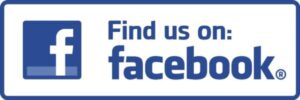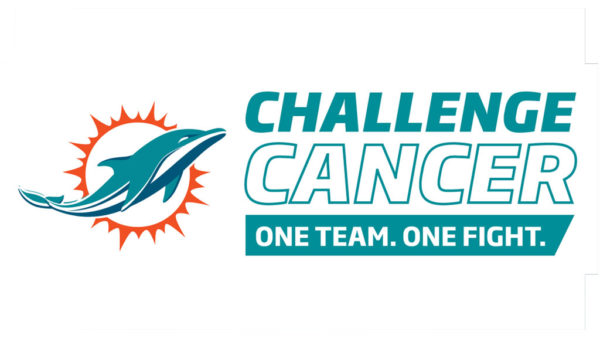
“Earl had trouble throwing the ball tonight, and he didn’t move the ball club.”
That was Don Shula’s succinct evaluation of backup quarterback Earl Morrall’s performance in the Dolphins’ 24-10 preseason win over the Atlanta Falcons in front of another sellout crowd at the Orange Bowl in Miami.
Shula added, “Earl threw well in practice this week. But he certainly wasn’t throwing the ball accurately tonight.” Morrall did not disagree, adding, “I’m perturbed after such a bad night.” You just don’t hear football players describe themselves as perturbed very often, do you?
Morrall had reason to be, having completed only three of his ten passes for a paltry 18 yards with one interception and no touchdowns. He had missed the previous two preseason games with an abdominal injury after also playing poorly in the opener.
Morrall would still have plenty of opportunities to lock down the backup quarterback job since his primary competition, lefty Jim Del Gaizo, had been placed on the waivers-injured player list before the Falcons game. He was expected to be resigned to the team’s taxi squad (more on that shortly) but, by rule, had to miss the next two games even though he cleared waivers, meaning no other team claimed him.
It’s no sure thing Del Gaizo would have been able to play anyway. He received nine stitches in the middle finger of his throwing hand after slicing it open on a closet door in his apartment and had not yet even started throwing again.
Shula had obviously intended to have Morrall backup starting quarterback Bob Griese when he signed the veteran in the spring, but he had not yet earned that spot. Shula had even pulled Morrall in the fourth quarter of the Falcons game after Atlanta closed a 17-0 gap to 17-10 and replaced him with Griese. This move would be unthinkable in today’s game, but preseason wins had greater value to some coaches in 1972, even though they did not count any more than they do now.
Shula said about the backup quarterback situation after the game, “It’s certainly not a cut-and-dried proposition. Earl’s experience has got to be a factor, but by the same token, he still has to step in and move our offense.” Morrall would need to play better in the next game in Washington to lock that spot up.
The running back situation was not cut and dried either, but there was more evidence in this game that it was due to an embarrassment of riches. Jim Kiick received his first extended playing time of the preseason and reminded everyone that he could still contribute. Kiick carried 13 times for 55 yards and scored two touchdowns. In the Miami Herald, Dolphins beat writer Bill Braucher wrote, “There is plenty of room for both backs (Kiick and Mercury Morris) to run from now until the middle of December and hopefully into January.” It was correctly assumed that Csonka was an immovable fixture in the Miami backfield.
Braucher even tossed out the idea of a four-back rotation,n including Charlie Leigh. This was prompted by Leigh’s spectacular game against the Falcons, although it did not show up in the box score.
Leigh is considered the only person to ever sign with the NFL directly out of high school when the Pittsburgh Steelers inked him in 1965. Leigh did not make the team and kicked around the football minor leagues, which were a thing back in the sixties, for three years. He earned about $50 per game playing at that level until making the Cleveland Browns roster in 1968 and 1969. He even scored his first NFL touchdown against the Steelers because that’s how things generally went for the Steelers those days. After a season in San Francisco, the Dolphins picked him up in 1971, and he was fighting to stick on the final roster in the 1972 camp.
Leigh was only credited with thirteen yards rushing and two catches for three yards, but he actually made the two best plays of the game…which both got wiped out by penalties. In the second quarter, Leigh weaved through the Atlanta special teams to return a punt for a 57-yard touchdown, only to see it called back for a clipping penalty (now known as the dreaded “block in the back”). He opened the second half by returning the kickoff up the sideline for a 103-yard touchdown, only to find it nullified because a Dolphin was offside.
Most importantly, Leigh had passed the eye test with Shula, who said after the game, “Never has one back accumulated so much yardage without it showing up in the statistics.” He singled Leigh out for more praise, saying, “I grabbed Charlie right after the game and assured him that I’ve got it right up here,” pointing to his head as he spoke.
While unlikely to receive many carries in a backfield with Csonka, Kiick, and Morris, the additional work Morris was likely to receive could open up opportunities for Leigh to return kicks. His performance against Atlanta greatly helped his chances.
Shula had much to be happy about after the Falcons game. The offense, with Kiick and Csonka sharing rushing duties, had ground out an 80-yard, 15-play touchdown drive that ran almost nine minutes off the clock. Linebacker Nick Buoniconti saw his first action of the preseason and totaled eight tackles, seven assists, and a forced fumble. The leader of the Dolphins’ defense was ready after two off-season surgeries.
The Dolphins’ training camp was finally winding down, and the start of the regular season was nearing. It had been an intense summer in Miami. The city had hosted BOTH presidential conventions. More recently, the Republicans had descended upon Miami to nominate President Richard Nixon to run for a second term. Not everyone was happy about that, and protests broke out during the convention. They were much larger than the ones during the earlier Democratic convention, with as many as 800 people being arrested in one day. Afterward, some city leaders were uncertain if they would ever consider trying to attract a political convention to Miami in the future.
The Summer Olympics in Munich, West Germany, was also drawing the attention of the world. The Berlin Wall was still many years away from falling, and the West Germans were eager to present a democratic and optimistic Germany to the world in contrast to Hitler’s Germany, which had hosted the 1936 Games. After a summer filled with political tension and daily headlines of the Vietnam war, many people were looking to the Olympics and the upcoming NFL season as a welcome respite.
Closer to home, the Dolphins, like every other NFL team, were moving toward finalizing their opening day roster, a smaller one than fans are used to today. With two preseason games remaining, the roster was trimmed to 49 players. That number would shrink to 44 after the penultimate preseason game the following week and arrive at the final 40-man limit for opening day.
In 1972, teams could also carry up to seven players on the cab, or taxi, squad. It was similar to today’s practice squad, with the notable exception that other teams could not sign players from it. Taxi squad players were still bound to their current team.
The concept of the taxi squad was originated in the 1940s by Cleveland Browns coach Paul Brown, who originated so many aspects of pro football. Brown had some players he wanted to keep around in case of injuries but did not have enough room for them on the roster. He convinced Browns’ founding owner Arthur McBride to put them on the payroll of his taxi company, thereby becoming known as the “taxi squad.” This was later adopted by the NFL and the taxi squad members remained employees of the teams.
The 1972 Dolphins were taking shape, but there was still work to do and important decisions to be made. Oh yes, there were also still two dreaded preseason games remaining to be played.
Coming Next Week: Chapter 6-Uncertain Footing
The Dolphins fall to the Redskins, and injuries mount. The new Poly-Turf field at the Orange Bowl receives complaints, and the world mourns the Olympic tragedy.













